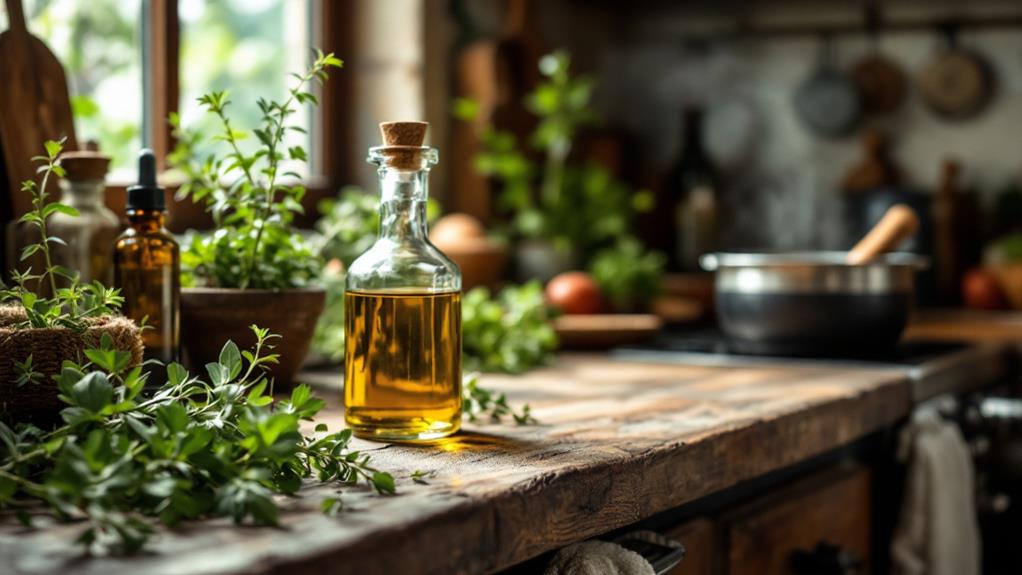How to Choose the Best Juicer for Your Needs: A Complete Guide
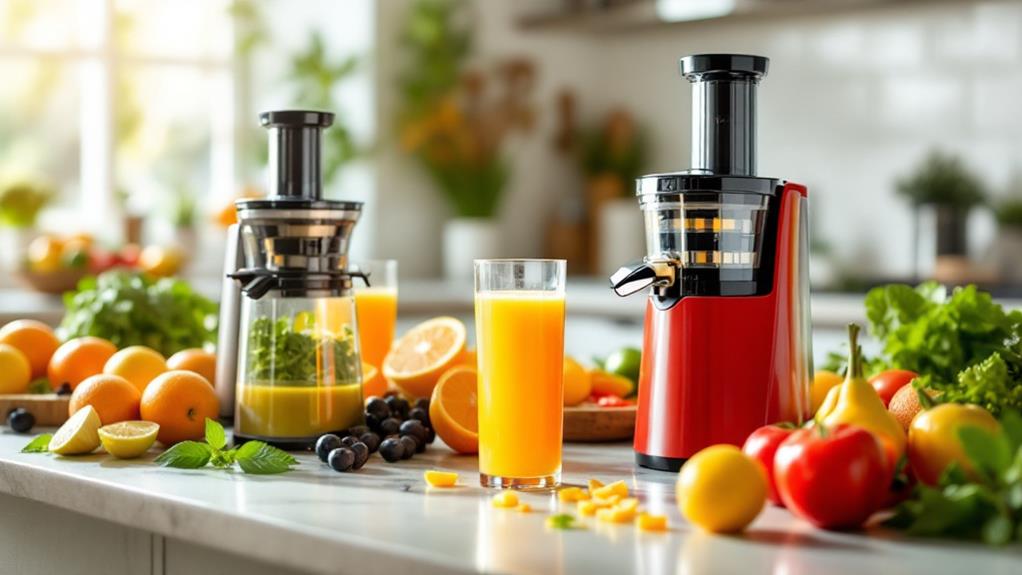
To choose the best juicer for your needs, start by considering the types available. Centrifugal juicers are fast and affordable but lower in nutrient retention. Masticating juicers, though pricier, excel at extracting nutritious juice from leafy greens. If you want maximum yield, look at twin gear options. Also, weigh features like noise level, ease of cleaning, and size, especially if you have limited kitchen space. Brands like Omega and Breville offer long-lasting options with varied features. Your choice should align with your lifestyle, dietary goals, and budget. There's much more to investigate as you aim for juicing perfection.
Benefits of Juicing
Juicing packs a punch by providing concentrated nutrients, making it easy to drink multiple servings of fruits and vegetables in just one glass. By incorporating juicing into your daily routine, you greatly improve your total nutrient intake, giving your body the vitamins and minerals it needs. Fresh juices support improved digestive health, as they facilitate quicker digestion and absorption, increasing your energy levels.
Juicing also plays an essential role in detoxification, helping rid your body of toxins and promoting liver health. This natural cleansing process can leave you feeling more lively and refreshed. Furthermore, fresh juices contribute to your daily fluid intake, which is important for maintaining proper hydration and total wellness. Staying hydrated supports everything from your skin's appearance to your mood and energy levels.
With juicing, you can enjoy customizable recipes tailored to your taste and dietary needs. Regardless of your focus on nutrient intake or simply enjoying a diverse range of flavors, juicers enable you to experiment with different fruits and vegetables. The health benefits of fresh juices are numerous, making them a valuable supplement to any diet. Accept the versatility and nourishment that juicing offers, and see the positive impact on your well-being.
Types of Juicers
When choosing a juicer, understanding the distinct types available can help you make the best decision for your needs. Each type of juicer offers unique features that cater to different preferences and priorities. Here's a quick look at the main types of juicers you might consider:
- Centrifugal Juicers: These operate at high speeds, making them perfect for hard fruits and vegetables. They're generally more affordable, typically ranging from $50 to $180, but may produce juice with more foam and slightly lower nutrient retention compared to other options.
- Masticating Juicers: Known for their slow, chewing action, these juicers excel in nutrient retention and leave behind drier pulp. They're ideal for leafy greens and assorted produce, though they start at a higher price point of around $200.
- Twin Gear Juicers: These feature twin augers that crush and grind ingredients, maximizing juice yield and nutrient retention. They're especially effective with leafy greens and hearty vegetables, but come at a premium price starting from $400.
- Manual Juicers: If you prefer a portable and budget-friendly option, manual juicers might be your go-to. They require some physical effort but offer a simple and low-cost juicing experience.
Each type offers different benefits, so consider what matters most to you regarding nutrient retention, high juice yield, and ease of cleaning to improve your juicing experience.
Key Features to Consider
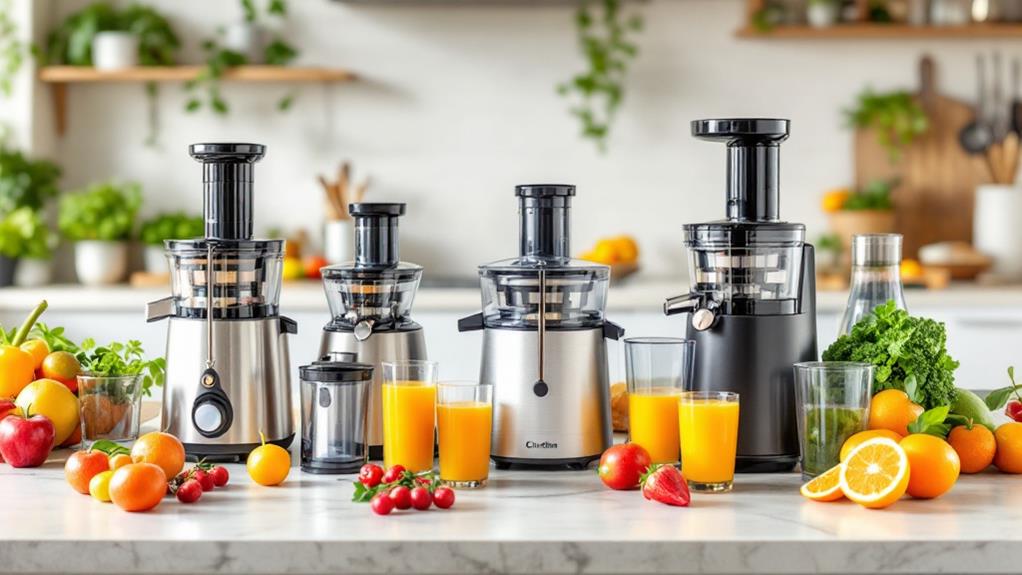
As you commence on your juicing adventure, several key features can make all the difference in your experience. To begin, focus on juice yield. Opt for juicers that promise a higher yield, guaranteeing you get the most out of your fruits and veggies. This not only enhances nutrient extraction but also minimizes waste. Juicing leafy greens? A higher yield is particularly significant for these nutrient-dense ingredients.
Next, consider the ease of cleaning. Many juicers feature removable, dishwasher-safe parts, which can save you time and effort. A quick and easy cleanup guarantees you'll use your juicer more often without the hassle of a lengthy scrub.
Noise level is another vital factor. If you're juicing in the morning or live in a shared space, quieter models, like masticating juicers, might be ideal compared to their louder centrifugal counterparts.
Size and storage are also significant considerations. Compact models fit snugly in small kitchens, while larger ones might require more counter space but offer extra features.
Popular Juicer Brands
Among the top contenders in the juicing world, Omega stands out for its masticating juicers, providing users with impressive longevity thanks to warranties that can last up to 15 years. These juicers are ideal if you're looking for efficient juice extraction and durability. On the other hand, if you prefer centrifugal juicers, Breville is celebrated for its premium models. Their groundbreaking designs and high juice extraction efficiency make them a hit with both beginners and experienced juicers.
Hurom is another brand worth evaluating, especially if you're after nutrient-rich juice. Specializing in slow juicing technology, Hurom reduces oxidation and foam, ensuring you get the healthiest juice possible. For those interested in versatility, Champion offers robust metal construction, making its juicers reliable for not just juice extraction but also for creating nut butters and frozen desserts.
If you're looking for a product that combines blending and juicing, Ninja's powerful motors and user-friendly designs might be perfect for you. Ninja products cater to a wide range of culinary needs, making them a popular choice in many kitchens.
- Omega: Known for masticating juicers and longevity.
- Breville: Excels with centrifugal juicers and efficiency.
- Hurom: Focuses on nutrient-rich juice with slow technology.
- Champion: Offers versatility in juice and food preparation.
Juicing Tips
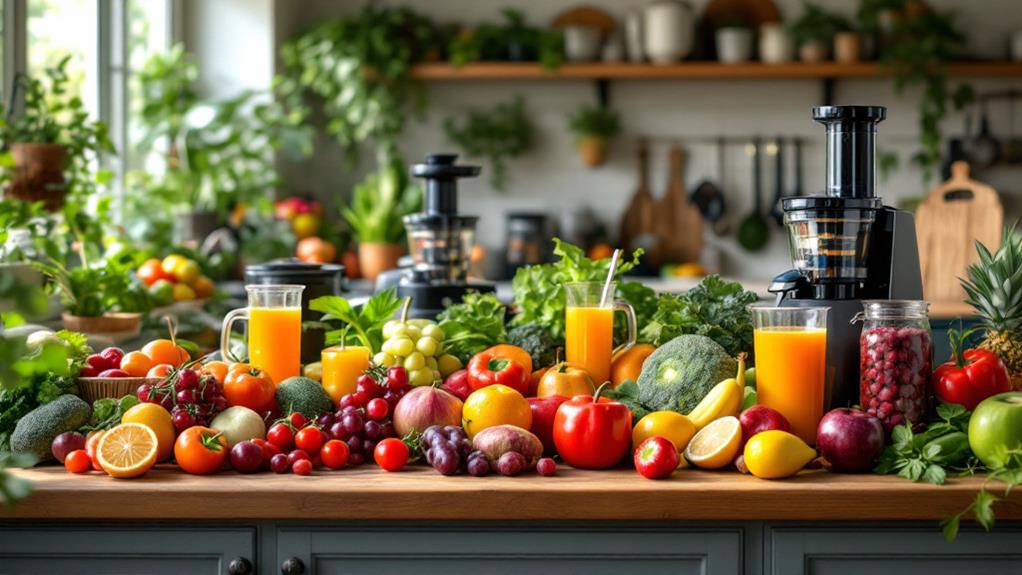
Juicing enthusiasts know the significance of fresh produce for achieving ideal juice quality and flavor. Using fresh fruits and vegetables guarantees maximum nutrient extraction, giving you a tasty and healthful drink. To make your juicing routine even better, experiment with greens like spinach, kale, and wheatgrass. These leafy greens offer different nutrients, so mixing them can increase your juice's total nutritional value.
Once you've made your juice, drink immediately to enjoy all the nutrients and flavor before they start to degrade. As you juice, keep in mind how juicers work can affect prep time. Some models require more chopping or peeling, so plan accordingly to make the process smooth.
After juicing, don't forget to incorporate pulp into your meals. It's great for adding fiber to recipes like muffins or smoothies, reducing waste, and making your juicing more sustainable. Finally, always clean your juicer right away. This prevents any pulp buildup, keeps your machine in top condition, and saves you time in the long run. By following these tips, you'll improve your juicing and blending experience, making the most out of every glass.
Juicing vs. Blending
After mastering different juicing tips, it's crucial to understand the differences between juicing and blending to make the most of your produce. Juicing and blending each offer unique benefits depending on your nutritional needs. Juicing extracts liquid and soluble nutrients from fruits and vegetables, leaving the pulp behind. This results in a drink with a smoother texture that your body can quickly absorb, making it an excellent choice for a nutrient enhancement. On the other hand, blending retains the entire produce, including fiber. This makes smoothies thicker, more filling, and ideal for amplifying your fiber intake.
Consider these factors when choosing between juicing and blending:
- Nutrient Absorption: Juiced drinks allow for rapid absorption of vitamins and minerals.
- Fiber Content: Blending keeps all the fiber, contributing to a more satisfying drink.
- Taste and Texture: Juiced beverages are often lighter, while smoothies offer a creamy texture.
- Dietary Goals: Choose juicing for concentrated nutrients or blending for fiber-rich options.
Ultimately, your choice between juicing and blending should reflect your taste preferences, dietary goals, and the specific nutrients you're looking to optimize from your fruits and vegetables.
Best Juicer Models
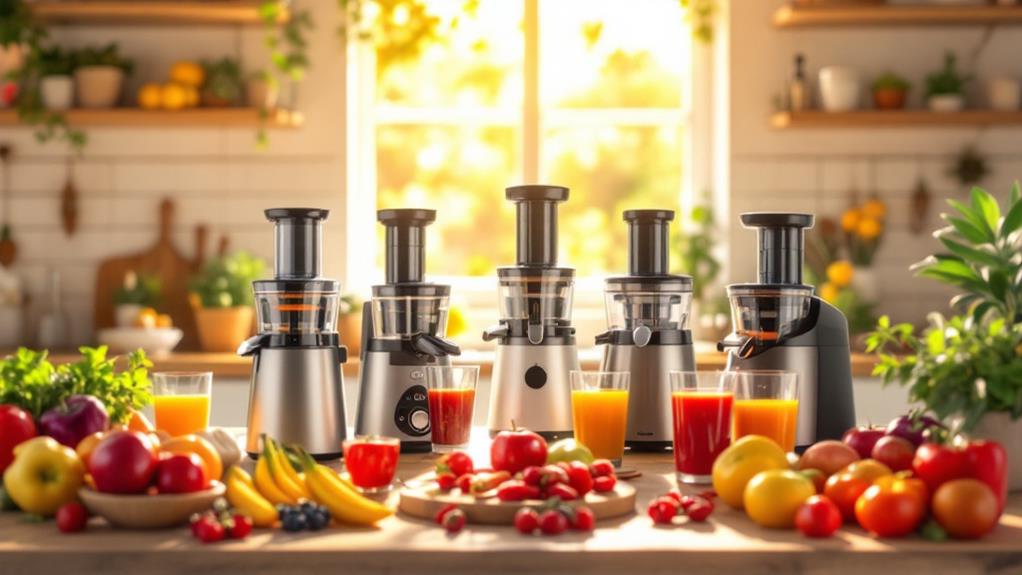
When you're ready to invest in a juicer, it's crucial to find a model that fits your lifestyle and budget. The best juicer for most people in 2023 is the Nama J2 Cold Press Juicer. Priced at $550, it features a self-feeding hopper and boasts a 15-year warranty, ensuring both ease of use and longevity. If you're after a compact option, consider the Nama J3 Cold Press Juicer for $450. It offers a 34 oz hopper capacity, perfect for single servings, and also comes with that reassuring 15-year warranty.
For those who prefer centrifugal options, the Breville Juice Fountain series presents excellent choices. You can opt for the Juice Fountain Plus at $180 or the Juice Fountain Cold at $200, both catering to different needs and budgets. These models are great for budget-conscious consumers seeking efficiency and speed.
If you're looking for an affordable alternative, the Shine Multi-Batch Compact Cold Press Juicer at $150 is designed for multi-batch juicing, albeit with more challenging cleaning requirements. Finally, the Hamilton Beach Big Mouth Juicer, priced at just $60, is ideal for beginners, though it produces more foam.




